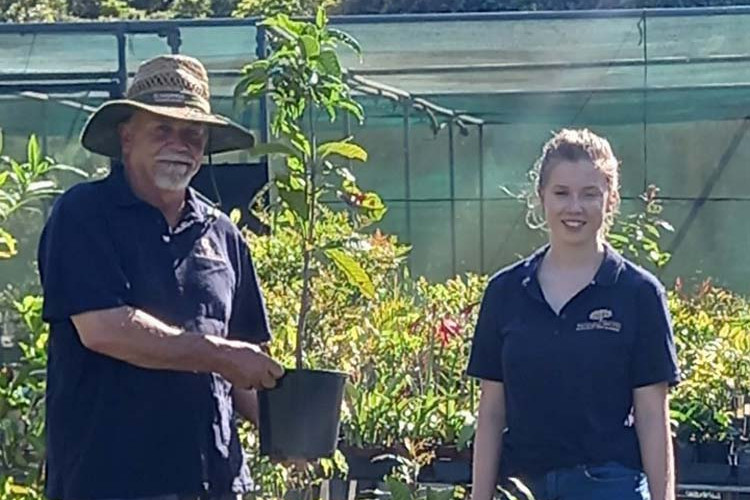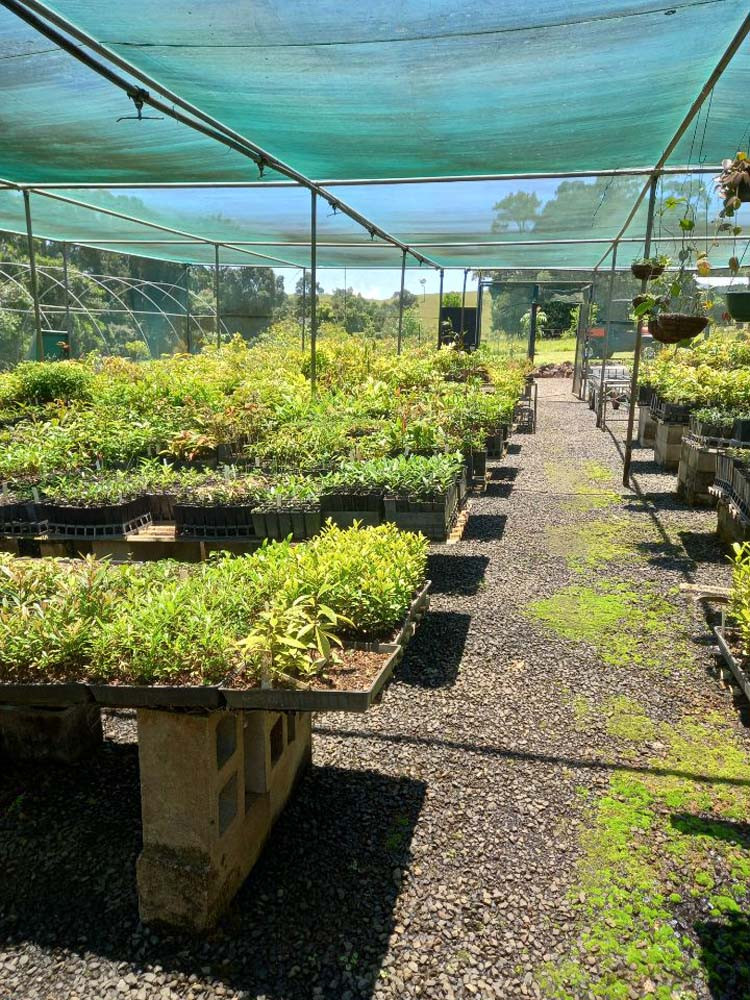On The Land
4 November, 2023
Trees benefit livestock and land
WITH summer now rapidly approaching and the effects of the El Nino being felt, livestock producers are looking at ways of reducing the heat burden on their livestock.

Wandana Waters Rainforest Tree Nursery owners Bruce and Tracey Jenkins branched out and started growing rainforest trees around five years ago for their own regenerative work on their property.
“It took off from there - I got a bit carried away!” Bruce said.
Now with an annual production of between 15,000-20,000 rainforest trees, they have been operating their business for four years.
A portion of their property is dedicated to expanding the rainforest to rehabilitate the ecosystem and support diversity of plants and wildlife.
They are members of Trees for the Evelyn and Atherton Tablelands (TREAT) which supports the revegetation of the Evelyn and Atherton Tablelands region.
Trees have been proven to have numerous significant benefits for livestock as well as the land:
• Shade enhances animal welfare by reducing the heat loads on livestock.
• Shelter belts of trees reduce the wind chill factor on livestock by providing windbreaks for them and allowing better control over livestock heat loads.
• Operator comfort for people working on properties is improved.
• Trees are invaluable for assisting with erosion management and control, salinity control, increasing local biodiversity by providing wildlife habitats and increasing the value of land.

It is also a well-known fact that heat stress results in a significant decline in the reproductive performance of cattle and buffaloes. Dairy cattle, in particular, suffer from decreased conception and pregnancy rates as a result of heat stress in hot weather with less animals going back in calf.
Hot cows result in less milk and shade has proven to be useful in increasing the milk yields of dairy cattle and the liveweight gains of beef cattle in hot climates.
In studies conducted, trees can reduce radiant heat loads on animals by 50% or more.
“I have heard figures quoted that for every one kilometre that a cow has to walk in hot weather, they can lose up to one litre of milk for dairy cattle or one kilogram of liveweight gain for beef cattle which ultimately is lost by the producer,” Bruce said.
He said trees were the cheapest method for enhancing animal welfare and providing shade for livestock in the hot months of the year.
Dairy farmers are Wandana Rainforest Tree Nursery's biggest customers.
The nursery specialises in native rainforest species of the Atherton Tablelands as well as a variety of other Australian natives and exotic timber species.
“We grow 230 different species, there are around 3500 different rainforest species in the area locally,” Bruce said.
“The varieties that we select to grow are ones which can be identified.
“The majority of rainforest trees are sold as tube stock, other larger trees are sold as well.”
The nursery grows a wide range of species suitable for revegetation work on the Atherton Tablelands. Specialty expertise is required for the propagation and growing of rainforest trees.
Seeds are collected from the rainforest on Bruce and Tracey's property as well as from other properties, with seeds having been collected from across the whole of the Southern Tablelands.
The seeds are then identified, have seed preparation work done on them and then are germinated.
“We have some unique species, with some species taking four to five years to germinate,” Bruce said.
“We have species which other nurseries would not have because it is not economical for them to produce them.”
A standard organic fertilizer is used in the potting mix, with seeds requiring constant watering.
It takes between 12-18 months from when a seed is first planted and germinated to when it is sold in a tube form, ready for planting.
Two types of plantings are commonly used - revegetation planting, where canopy closure is obtained in around three years and paddock planting.
“With usable shade being obtained in seven to ten years after planting, multigenerational agricultural industries such as dairying benefit greatly from establishing trees on their properties for future generations to benefit from,” Bruce said.
“Young trees definitely need to be fenced off until the trees are at a height where livestock can’t reach the leaves. It always pays to protect the trees until they are a fair size.”
Two of the biggest challenges which Bruce experiences is predation from marsupials and the weather.
“When it is constantly raining endlessly, we experience some rainforest tree tube losses because it is too wet even for rainforest seedlings, a condition called Damping Off can set in and cause losses,” Bruce said.
The most rewarding thing for Bruce about his operation is that it allows him to further develop his love of growing rainforest trees which, in turn, helps both livestock and the environment.
Some customers purchase exclusively timber varieties which can be eventually milled and used for timber such as the highly sought after Black Walnut.
For further information, contact Bruce and Tracey Jenkins on 0407 169 071 or go to www.wandanawaters.com


